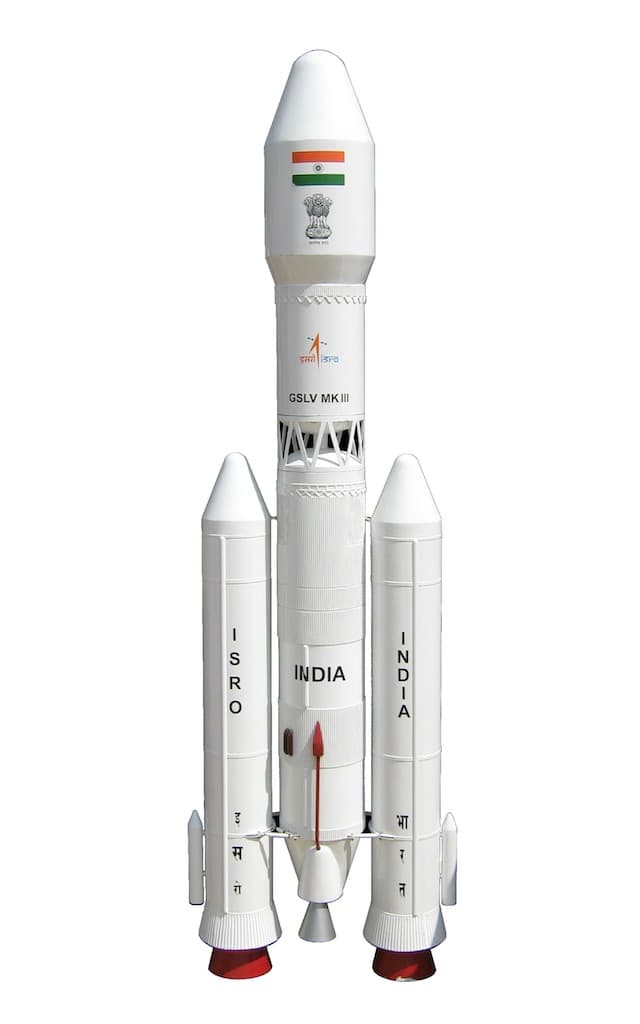ISRO to launch its heaviest rocket GSLV Mark-III in first week of June
The Indian Space Research Organization, ISRO is planning to launch its heaviest rocket to date, the mighty Geosynchronous Satellite Launch Vehicle Mark III (aka GSLV Mark-III) in the first week of June. Weighing over 640 tonnes, the GSLV Mark-III is equipped with a bigger cryogenic engine and ISRO's scientists are all set for its maiden launch.

The maiden launch was earlier expected in the month of May. However, the launch being the maiden one; ISRP wanted to ensure the integrity of the systems through several extensive tests. It caused a slight change in the schedule, informed Sivan.
The GSAT-19, weighing about 3200 Kg will be the heaviest satellite ever lifted by an Indian rocket it has already been positioned at the Sriharikota port. The GSAT-19 is a multi-beam satellite. It will carray Ka and Ku band forward and return link transponders. ISRO expects the overall lifespan of the satellite to be around 15 years.
The GSLV Mark-III can lift up to 4 tonnes of equipment. Based upon the success of GSAT-19 launch, ISRO will gradually increase the payload in future missions. ISRO had tested the structural strength and stability of the rocket with about 3700 KG payload back in 2014. It was a successful mission and gave important insights on modification of rocket's shield and aerodynamic structure. Engineers have made changes to the overall shape of the heat shield and strap-on motors. The mission also helped shed about 20% weight from the current mission.
S. Somanath, the director at Liquid Propulsion Systems Center (LPSC) informed that the mass of GSLV Mark-III's cryogenic engine is twice that of GSLV Mark-II. Also the cryogenic engine on old rocket had propellant volume of 12 tonnes while the latest one has it at 27 tonnes. The trust power is also increased from 7.5 tonnes to 19.5 tonnes.
He further informed that ISRO has the Government's nod to build more GSLV Mark-II rockets and orders for the hardware have already been made. We'll keep you informed about the GSLV Mark-III mission.
Source: #-Link-Snipped-#
K. Sivan, the director at ISRO's Vikram Sarabhai Space Center (VSSC) informed IANS that this rocket is a fruit of 12 years of hard-work at ISRO. The launch is expected in the first week of June from Sriharikota and the rocket will carry communication satellite GSAT-19. ISRO officials are confident about the success of this new mission and have already integrated the strap-on motors with core engine.

The GSAT-19, weighing about 3200 Kg will be the heaviest satellite ever lifted by an Indian rocket it has already been positioned at the Sriharikota port. The GSAT-19 is a multi-beam satellite. It will carray Ka and Ku band forward and return link transponders. ISRO expects the overall lifespan of the satellite to be around 15 years.
The GSLV Mark-III can lift up to 4 tonnes of equipment. Based upon the success of GSAT-19 launch, ISRO will gradually increase the payload in future missions. ISRO had tested the structural strength and stability of the rocket with about 3700 KG payload back in 2014. It was a successful mission and gave important insights on modification of rocket's shield and aerodynamic structure. Engineers have made changes to the overall shape of the heat shield and strap-on motors. The mission also helped shed about 20% weight from the current mission.
S. Somanath, the director at Liquid Propulsion Systems Center (LPSC) informed that the mass of GSLV Mark-III's cryogenic engine is twice that of GSLV Mark-II. Also the cryogenic engine on old rocket had propellant volume of 12 tonnes while the latest one has it at 27 tonnes. The trust power is also increased from 7.5 tonnes to 19.5 tonnes.
He further informed that ISRO has the Government's nod to build more GSLV Mark-II rockets and orders for the hardware have already been made. We'll keep you informed about the GSLV Mark-III mission.
Source: #-Link-Snipped-#
Replies
You are reading an archived discussion.
Related Posts
For those interested:
Protect Your Smarts, Build a Smart Motorcycle Helmet
Please note the disclaimer:
PLEASE NOTE: This helmet is a prototype project and should not be used on the...
A hard-core Delhiite, Ruchi Kalra was brought up a single child in a middle-class Punjabi family. She went on to study Chemical Engineering from IIT Delhi and then worked at...
Following the launch of Y3-II smartphone last year, Huawei has come up with a new upgraded model- Y3 (2017) in the same series. The dual-SIM device sports a 5-inch FWVGA...
Hi Team,
I am new to this blog. I have this question in my mind a long days. I asked this question to someone, but the information is not enough...
Hi Firends, I had done BTech Electrical and I have 9+ Yrs Experience in Project Execution in Industrial Projects and as a Quality inspector experience in On Shore Oil &...
